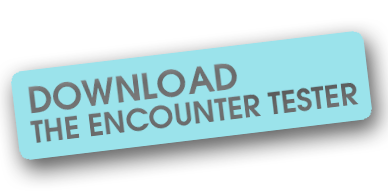The Siboot personality model
Definition & Examples
A personality model is a set of variables or traits that, taken together, characterize a character for the purposes of the context in which it is used. For example, consider the very first role-playing game, Dungeons and Dragons. It used a personality model sporting just six traits: strength, constitution, dexterity, intelligence, wisdom, and charisma. Those traits determined the outcomes of a player’s interactions in the game.
The most commonly used personality model in psychology is called The Big Five Personality Traits, or the OCEAN model. The five traits in this model are openness, conscientiousness, extraversion, agreeableness, and neuroticism. They have proven to be very useful in studies of actual people.
Interactive storytelling requires its own kind of personality model, defined by two dominating requirements.
Parsimony
Many people think that, the more traits there are in a model, the better it is. This is not true. A personality model is meant to be used, not admired. In the case of interactive storytelling, it is used to enable an actor to make emotionally sound decisions. Those decisions are made by algorithms designed by the author of the storyworld. The more traits there are in a personality model, the harder it is for an author to decide which traits to apply to a particular decision. Should it be based on an actor’s Temper trait? His Anger trait? His Dislike of another actor? His Volatility? His Aggressiveness? His Viciousness? His Empathy? His Strength? Too many traits spoil the algorithm.
Span
The traits in a personality space must span the imaginary space of behavior in the storyworld. Here’s a simple example: suppose that you have a storyworld about adultery. It would be important in this storyworld to have a personality trait representing Lust, and perhaps another trait representing Sex Appeal. Those personality traits would be important to the decisions that actors would make in such a storyworld. On the other hand, a game about young kids would not need these traits. The author must therefore consider carefully what kinds of decisions will be available to the actors in the storyworld (the verbs) and decide upon the smallest set of traits that permit adequate decision-making for all these verbs.
The Siboot personality model
The personality model for Siboot has only three traits: Goodness, Honesty, and Power. Goodness is the propensity to do nice things to people. Honesty is the propensity to tell the truth and honor one’s promises. Power is more difficult to understand. Think of it as ‘force of personality’ or ‘dominating nature’ or even ‘self-confidence’.
Associated with each of these traits are several related traits. For example, Accordance is an actor's propensity to accord a higher value of a trait to another actor. The accordance value for Honesty is what we call ‘gullibility’. An actor’s perception of another actor’s traits comprises their relationship with that actor. For example, an actor’s perceived value of honesty of another actor is really just the trust they hold for the other.
Finally, the Siboot personality model includes moods, which are temporary versions of an actor’s feelings. If something angers an actor, then their mood for power will be increased. In other words, anger is really just the mood-version of power. Happiness is the mood-version of goodness, and so on.


